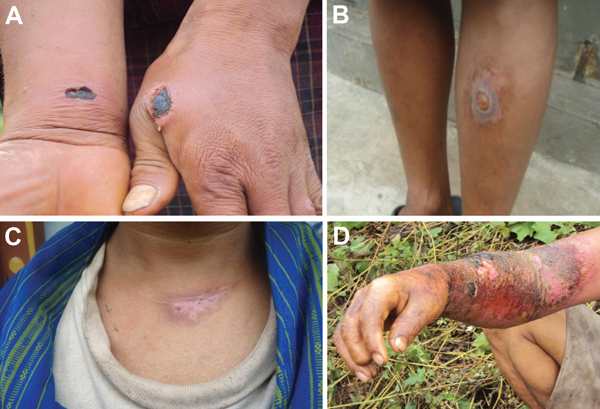Volume 20, Number 9—September 2014
Dispatch
Investigation and Control of Anthrax Outbreak at the Human–Animal Interface, Bhutan, 2010
Figure 2

Figure 2. Cutaneous anthrax with typical black eschars on the hand and wrist (A), leg (B), and neck (scar) (C); and severe inflammation of the arm (D) of persons who had contact with Bacillus anthracis–infected animals and carcasses, Bhutan 2010.
Page created: September 03, 2014
Page updated: September 03, 2014
Page reviewed: September 03, 2014
The conclusions, findings, and opinions expressed by authors contributing to this journal do not necessarily reflect the official position of the U.S. Department of Health and Human Services, the Public Health Service, the Centers for Disease Control and Prevention, or the authors' affiliated institutions. Use of trade names is for identification only and does not imply endorsement by any of the groups named above.